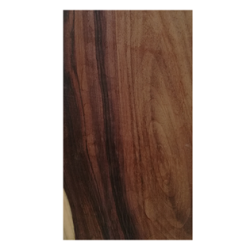Santos Rosewood / Pau Ferro / Morado

Family: Fabaceae - Order: Fabales - Class: Magnoliopsida
Scientific name: Machaerium
scleroxylon, Machaerium Sp.
Trade name: Pau Ferro, Santos Rosewood
Also
known as Caviuna, Palo
Morado, Isapuí
Origin:
Tropical South America
Instrumental
uses:
Guitar back and sides, fingerboards, bridges, head plates, peg heads and bindings.
Tonal
properties:
Is
not a true Rosewood but somewhat similar in properties; more dense than some
rosewoods but mostly neutral sounding. A big advantage above. A great overall
frequency range and a fast responsive wood with a nice sustained sound. On
Classical Guitar sets it fits well with all types of tops. This wood when used
in back and sides directly relates the qualities and sounds of the wood used
for the top.
Used
in fingerboards it has a very well balanced tonal transmission.
The
grain is either straight to interlocked on some kinds. The texture is very fine
and lustrous.
Can be a little difficult to work
but glues and finishes very well.
Is
an exotic hard wood, stiff and very resistant with an average
dried weight nearly 54 lbs/ft3 or 865 kg/m3.
It
is a native from Tropical South America. It grows in Brazil, Bolivia, Paraguay
and Argentina. It is abundant in the Parana Basin in primary and secondary
forests on well drained areas. It prefers stony, fertile clayey soils.
It is a medium sized tree, it
attains heights of 15 to 25 m, with a diameter at breast height of 50 to 90 cm.
The bole is fluted until half of its length.
The
heartwood can be highly varied, ranging from reddish/orange to a dark
violet/brown, usually with contrasting darker black streaks. The sapwood is
pale yellow and is clearly demarcated from the heartwood.
CITES status
is unrestricted.
Is reported on
the IUCN Red List as least concern.


